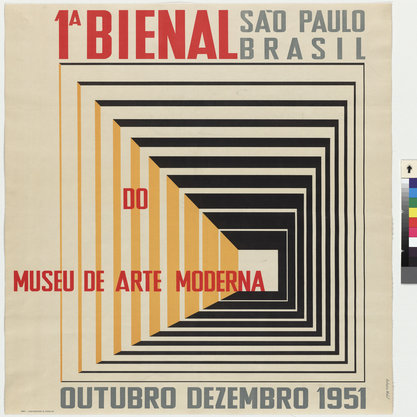Article
Valentim, Rubem (1922–1991) By Heeren, Alice
Article
Rubem Valentim was born in 1922 in Salvador in the state of Bahia. A self-taught artist, Valentim starts his career in the 1940s acting alongside artists like Mario Cravo Júnior and others in effervescent new artistic milieu of the state of Brahia. As art historian Roberto Conduru has noted, Valentim, similarly to other artists working in the 1940s and 1950s in Latin America, responded to Joaquín Torres-García’s Universalimso Constructivo. Nevertheless, Valentim also learned from artists such as Alfredo Volpi and Milton Dacosta carrying their geometric stylistic principles into his own symbolic world heavily influenced by Afro-Brazilian religions. From the 1960s onwards, besides small-scale objects and paintings, Valentim also began working in large-scale murals, installations, and public art pieces, the most famous being his marble mural for the NOVACAP building in Brasília. Valentim found a common thread between the modernist rationality of Constructivism and the geometric lines of Afro-Brazilian visual culture. His work manifested local values and themes, while acting in the process of building a Brazilian national identity, and also figuring into the universal debates central to modernism. Paulo Herkenhoff points to how the double axe of Xangô, a recurrent theme in Valentim’s work with its double edge blade acts as a metaphor for the artist’s endeavor, working between Constructivism and Afro-Brazilian mythology. Valentim has become an exponent of Brazilian art and is especially praised for shedding light into the visual world of Afro-Brazilian religions. He showed at the now iconic 1966 World Festival of Negro Arts in Dakar, Senegal and at the 16ª Bienal Internacional de São Paulo and in 1977. In 1998, the Museu de Arte Moderna da Bahia (MAM-BA) inaugurated a special room in his sculpture garden in the artist’s name.

